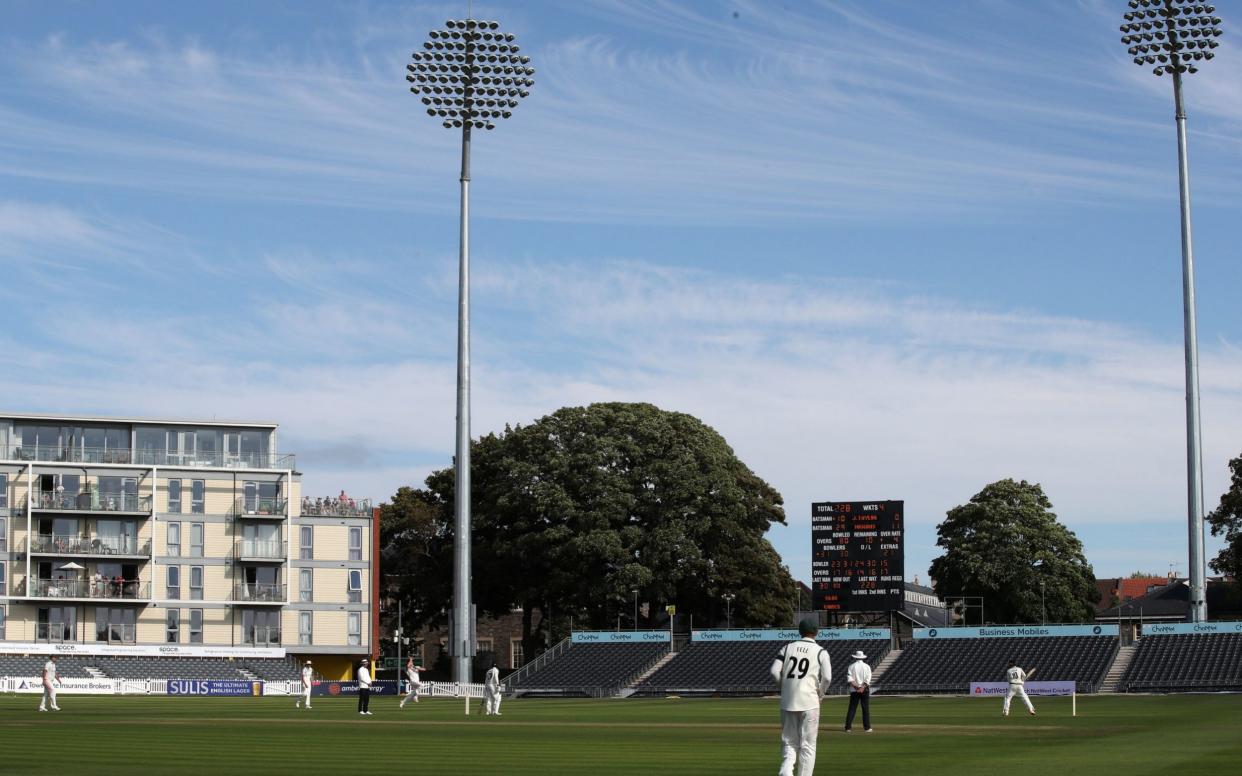Four days travelling around the counties has shown that the Bob Willis Trophy is a great format

It has been one of the England and Wales Cricket Board’s finer inventions.
As the first of five rounds of the Bob Willis Trophy came to a close, with Worcestershire knocking off their target of 110 off 35 overs with eight wickets and 8.5 overs to spare against Gloucestershire, the impression was growing that herein lies championship cricket’s future.
Out of crises come changes hitherto unpredicted. The BWT, in which the 18 first-class counties are split into three geographical groups and each team play the other five once, has an attraction which the current format of the County Championship will never have as its Second Division is cricket’s equivalent of a graveyard. At the outset of this new mini-competition any county can win it, so every cricketer can hope and aspire.
Worcestershire finished second bottom of the Second Division last season but won this opening game with accurate pace bowling which featured five lbws in a row. With Warwickshire having failed to finish off Northamptonshire after they omitted Henry Brookes and lacked extra pace when Olly Stone broke down, Worcestershire need only have a bit of a roll to be vying with Somerset to finish top of the Central group.
“It would be beneficial to the game if every county were to have a chance of winning the championship at the start of a season,” said Paul Allott, Lancashire’s director of cricket, as his county – with three debutants – were beaten in an even closer run chase by Leicestershire at the neutral venue of New Road, Worcester, with eight balls to spare. Leicestershire finished bottom of last season’s championship; this season they can hope to top the North group and even win the final in early October, probably at Lord’s, between the two counties who top their group with the most points.

A second selling point of the BWT format, were it expanded so that every county played the other five in their group home and away, is that it would allow every other competition in the ECB’s crowded calendar to breathe – by reducing the number of championship games from 14 to 10 per county, plus the final.
The future version of the championship, if based on three geographical groups, could even be increased from 10 to 12 games by play-offs ie the county in second place in the North would play the second-placed county in the Central and South groups, to decide who end fourth, fifth and sixth. Every county would finish in one of 18 positions with prize-money to match.
“I’d be definitely up for something like that,” said Gloucestershire’s chief executive Will Brown.
The system of organising the County Championship which satisfies everyone has yet to be devised in 150 years of experiment.
It is always a balance between the competition in itself and the sort of nursery it should be for the England team who subsidise it.
After Lord MacLaurin became the ECB chairman in the mid-1990s, he proposed three conferences chosen by lot each season, so that Durham and Kent might be in the same group. These times are more eco-conscious. A championship of three regional groups will involve less travelling and less expenditure on hotels, and more derbies. There might come to be a sameness about the fixtures but if there are play-offs, counties will face one or two new opponents outside their group every season.

By shaving a fortnight or so off the championship, the whole season can breathe, given the new elephant in the room which is the Hundred. It may not be cricket as we know it, as it abolishes the building block which is the six-ball over, but the Hundred is a fait accompli, as the ECB’s attempt to put cricket back on terrestrial television, having hastily removed it.
But there would have been inadequate room for it this season, had it gone ahead as planned: it would have overlapped with the domestic 50-over competition and removed all the better players from it, leaving England the World Cup winners without a proper nursery to produce the players who might retain it.
The second half of April, and May, could in future be devoted to the first six rounds of the revised championship. The standard might drop but, at one game per week, with three days break in between, pace bowlers should be able to increase their intensity or speed. Then the 50-over competition in June, with all but the England players available, so that England might win the World Cup again; the Hundred in July in school holidays; the T20 competition in August; and the last four rounds of the championship in September, together with any final or play-offs.
The youthfulness of the players added to the freshness of this first round: not so many overseas players, even slightly fewer South Africans of various ages and passports, replaced by numerous 19 and 20-year-old English players. None of us can have any idea what it was like to play county cricket in 1919, or 1946, after four and six years without, but the last four days have given an inkling of the relief.

